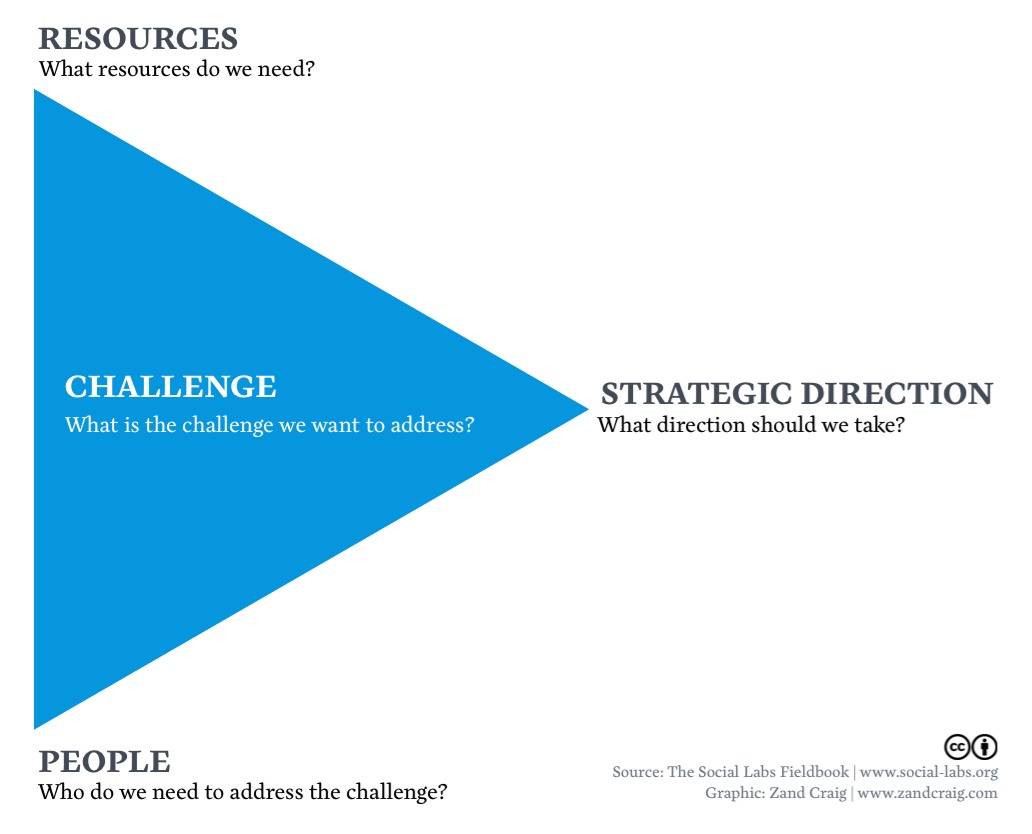
The “preconditions” for a social lab include a number of pre-requisite ingredients that need to be present to allow for the possibility of success. When launching or building the foundation for a social lab, the beginning is of utmost importance. The ideas, people, power structures, institutions, and relationships that constitute the founding moment of a lab will often determine to a large extent the success or failure of the outcomes of the lab itself.
Preconditions are, if you like, a little like pulling together everything you need in order to start an expedition. Starting an expedition without each of these preconditions in place risks failure. Forgetting to take enough water or to take a readily available map represent a type of failure that can easily be avoided.
Finally, preconditions should not be confused for a “strategy” – they are literally preconditions for your strategy.
In a social lab, among the outputs of the preconditions phase are the following:
- Challenge – can we clearly state what the challenge is that we want to address?
- Do we have the necessary Resources to start work?
- Do we have the right People (in terms of either skills or representation) on board?
- Strategic Direction – our best guess as to what might address the challenge we wish to address? Preconditions represent a starting-point and not an end point.






